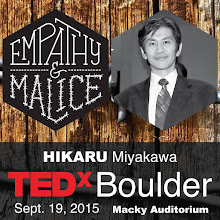
Happy New Year to you all!
I hope this year, 2013, would bring joy and prosperity to you and your dear ones.
Thank you very much for your warm support throughout 2012.
For me, the year 2012 was a transformational year especially regarding my artistic direction. I have literally gone through the "death and rebirth" process intensely especially
since last June, so I have decided to share my process with you.
Since the beginning of the year 2012, I was aware of the process of metamorphosis within me.
At the same time, I was realizing that I have reached the top of one mountain, so to speak.
 |
| "Dancing Ganesha" |
Although I could have keep going the way I was going with many sketched almost ready to be materialized, I felt the need for the change in the statusquo. This could mean the end of my Mannerist expression, but some how I felt it was necessary to "graduate" being Pontormo of the 20th/21st century and get on with my life. By the way, Pontormo was under the wing of my beloved master, Leonardo da Vinci! Of course, I had no intention of stopping mycareer as an artist, so I went on the soul quest - the quest for the new expression. Consequently, "Dancing Ganesha" became the last of the Mannerist series.
First thing I did was to move away from my habitual creative process and began experimenting with the abstract way of expressing myself. It was not a brand new experience, for I have painted abstractly before. I also tried other forms of expression.
Soon I realized the voice telling me what to do, and it was rather a "rigid",inflexible, dogmatic voice. This voice was not an intuitive one. It was a habitual one. It was telling me what I "should" do instead of what I "could" do. For example, my voice would tell me to strictly stick with the non-recognizable form (even when I see the potential to bring out the familiar forms) since I am doing an abstract painting. To listen to this voice had meant that I had to become less (or least) spontaneous and/or playful in my creative process. Since one of my reasons for going through with this informational journey is to free myself from self inflicting dogma, I allowed the recognizable form to come out. (By saying this, I do not imply that I have not been playful in the past. No, I have been.)
Within two months, I came to the symbolic threshold. To cross it was like crossing the Rubicon river. Entering the competition sponsored by WPA to do with the QR Code was such crossing to me since one of the agreements the artists had to make in order to participate in this exhibition was to agree to let the artwork being defaced/destroyed.
 |
| for the WPA exhibition |
I agreed with it feeling that this would be my symbolic crossing of the threshold. It was interesting to know that my work was accepted right away. The acceptance message came earlier than the designated date! I took this as the big sign of "OK" from the Universe and God.
 |
| "Tohu wa Bohu" |
Destruction can be followed by creation.
I went through the "Tohu-wa-Bohu" stage. Then one day, one of my dear friends who saw one of my experimental paintings said something, and it has acted like the "Let there be light (enlightenment)!" call out.
 |
| "Ryu-gu Castle" |
After that moment, the separation of upper and lower water event happened.
I knew that the heaven/firmament in Hebrew, Ha-Sh-Mayim, contains the word,Mayim (water/sea). Mary the Mother, whom I have painted many times with sort of a devotion, has the name meaning "bitter sea" (Maryam). I recalled the near drowning experience in the sea followed by self rescuing effort. I realized my late-father's name means "illuminating (illumination of) the sea/ocean". I also have worked as a chef at the sushi restaurants...etc., etc., etc. ... all of these events and experiences led to me to the theme: sea/ocean!
It was like putting the dormant and missing pieces of puzzle together, and itoccurred during the Year of Water Dragon and followed by the year 2013 as the year of Water Snake!
I also have heard that there are more people on the moon than the people who had explored the deeper part of the ocean. I felt the need to bring the awareness of the people to the ocean, our mother and her creatures.
 |
| "Whale" |
In the year 2011, Japan had suffered the disaster - earthquake followed by Tsunami and the failure of nuclear power plant causing the radioactive pollution.
It is most appropriate for me as Japanese artist to pray for the safety of my people and for the safe journey of the departed souls through my artistic activities. It is as if I am appeasing the Japanese sea god, Wadatsumi.
 |
| "Wadatsumi" |
I also have added the new dimension (from exclusively 2D creations to more 3D creations) to my artistic activities using the paper (tree derived) products both new and the recycled.
These creations will soon be revealed when it is ready.
The solo exhibition which opened in the beginning part of December is going well. I am hearing many complements so far and am thankful.
I know that my informational journey is continuing, but for now, I am continuing painting with the sea/ocean as the theme, and I KNOW in my heart and soul that I am no the right path.
All the artworks above: © 2012 by Hikaru Hirata-Miyakawa
All rights reserved.



















